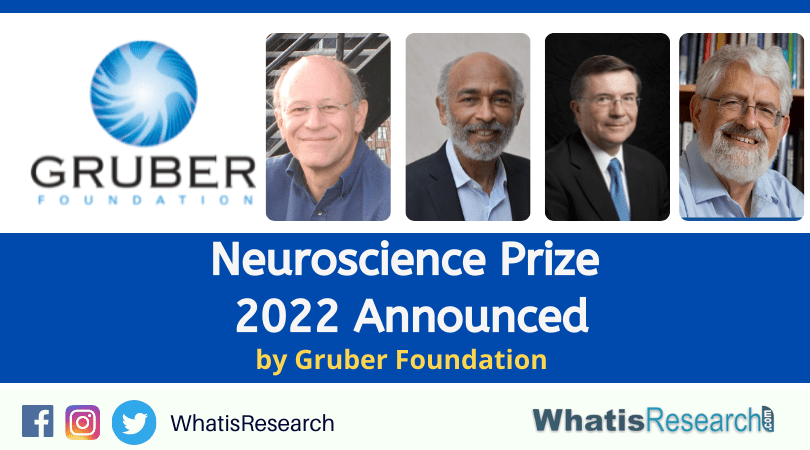The Gruber Foundation recognizes pioneers in the domains of cosmology, genetics, neuroscience, justice, and women’s rights whose groundbreaking work inspires and enables major revolutions in knowledge and culture. Recently Neuroscience Prize 2022 Announced by the Gruber Foundation.
Neuroscience Prize 2022 Announced
About the Gruber Foundation
The Gruber Foundation is a 509(a)(3) Type 1 supporting organization that is operated, overseen, or directed by Yale University and was established in 2011 under Section 501(c)(3) of the Internal Revenue Code.
The Peter and Patricia Gruber Foundation supported it, and Patricia Gruber is the Co-Founder and President Emeritus.
Must reads: International Max Planck Research School (IMPRS) Physics of Light announced PhD position
Neuroscience Prize 2022 Announced
Gruber Foundation announced four recipients for their influential contributions to the fields of computational and theoretical neuroscience.
As datasets have grown ever larger and more complex, these fields have increasingly helped scientists unravel the mysteries of how the brain functions in both health and disease.
The prize, which includes a total of $500,000 award, will be presented in San Diego, California, on Nov. 13 at the annual meeting of the Society for Neuroscience.
The four Neuroscience Prize 2022 winner’s names are as follows
- Larry Abbott, PhD, of Columbia University,
- Emery Neal Brown, MD, PhD, of the Massachusetts Institute of Technology and Massachusetts General Hospital,
- Terrence Sejnowski, PhD, of the Salk Institute for Biological Studies and UC San Diego
- Haim Sompolinsky, PhD, of the Hebrew University of Jerusalem and Harvard University,
These eminent four have been pioneers in the fields of computational and theoretical neuroscience, fields that have become crucial to helping scientists unravel the complexities of neural networks in the brain.
Larry Abbott Profile
In landmark studies, Abbott suggested how spike-timing dependent plasticity (STDP), a process by which neurons adjust their synaptic connections with each other, supports memory and learning.
In collaboration with experimental groups, he has uncovered functional principles underlying neural circuits involved in sensory processing, including olfaction and electrosensation, and motor behaviors ranging from rhythmic pattern generation to navigation.
Emery Neal Brown
The pioneering and rigorous insights of Larry Abbott, PhD, of Columbia University, Emery Neal Brown, MD, PhD, of the Massachusetts Institute of Technology and Massachusetts General Hospital, Terrence Sejnowski, PhD, of the Salk Institute for Biological Studies and UC San Diego, and Haim Sompolinsky, PhD, of the Hebrew University of Jerusalem and Harvard University, have been pivotal in the development of computational and theoretical neuroscience.
In landmark studies, Abbott suggested how spike-timing dependent plasticity (STDP), a process by which neurons adjust their synaptic connections with each other, supports memory and learning. In collaboration with experimental groups, he has uncovered functional principles underlying neural circuits involved in sensory processing, including olfaction and electrosensation, and motor behaviors ranging from rhythmic pattern generation to navigation.
Terrence Sejnowski
Among Sejnowski’s transformative contributions to computational neuroscience is the introduction of the first unsupervised learning algorithm for independent component analysis (ICA), which is now a mainstay in brain imaging. He has also shown that sleep spindles (brain wave patterns during non-rapid eye movement, or NREM, sleep) are not synchronous across the cortex, as was previously believed, but instead create circular traveling waves—a finding that has shed significant new light on how the brain learns and how memory is affected in disorders such as Alzheimer’s disease.
Haim Sompolinsky,
Sompolinsky’s pioneering research laid the basis for the creation of innovative attractor-network models that describe the collective behavior and informational processing of large, complex neural circuits in the brain. He has also described how the combination of neuronal activity and inhibition lead to stable patterns of activity in the brain—findings that have profoundly influenced our understanding of brain systems.
News Source: Click here
Join our Facebook Group https://www.facebook.com/groups/whatisresearch






